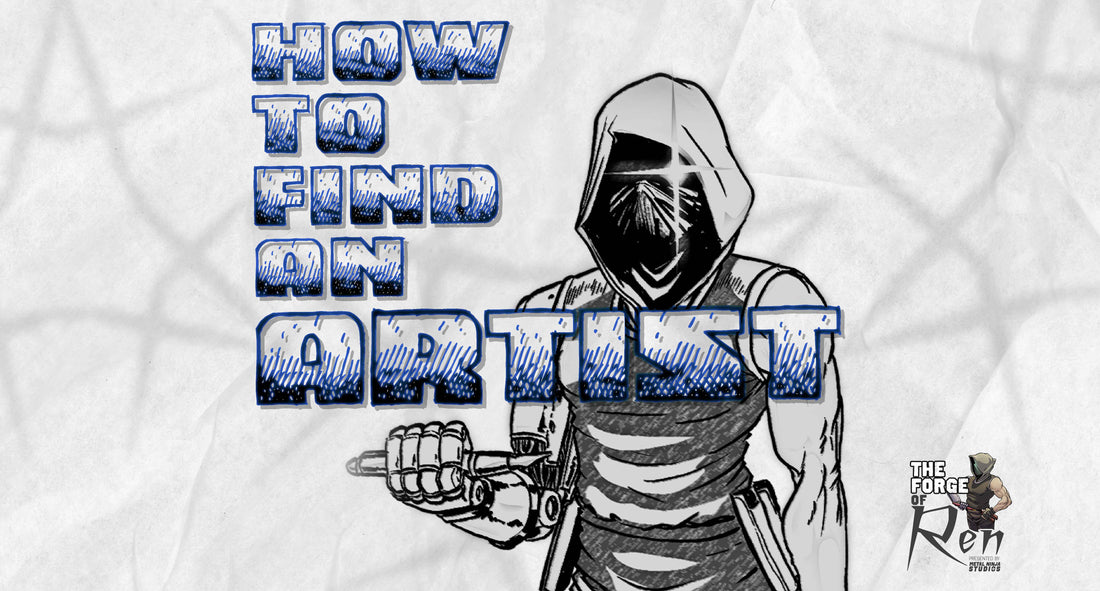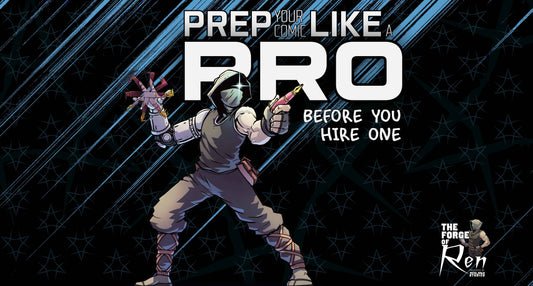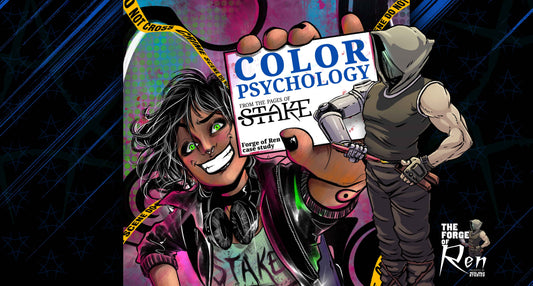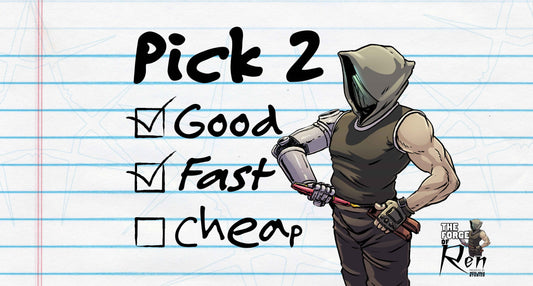Introduction
Finding the right artist for your indie comic can make or break your project. Typically, the term "artist" refers to a single person, but it's important to remember that comic book art is often a team effort. Many comics rely on a group of artistic collaborators, including line artists (pencilers), inkers, colorists, and sometimes layout artists and flatters. In this guide, we'll primarily use the singular term "artist," but the principles apply just as well to assembling an art team—with the added consideration of managing more moving parts, including additional logistical and budgetary complexities.
Whether you're launching a Kickstarter, self-publishing, or pitching to publishers, your artist will be one of the most critical collaborators. But how do you choose the right one? This guide will walk you through the essential factors to consider, from evaluating portfolios to setting clear expectations for a successful collaboration.

Understanding Your Comic's Needs
Before you start looking for an artist, take time to define what you need—and that goes beyond knowing the style or genre you're after. This is where you start thinking about your overall investment strategy for the entire project, not just the per-page budget for art.
Comics aren't just a collection of pages; they're long-term creative investments that blend storytelling, visual artistry, production quality, and marketing potential. Understanding how your creative, financial, and production decisions work together is essential.
Ask yourself:
- What genre and style best fit your story?
- Do you need a penciler, inker, colorist, or an artist who does it all?
- What's your ideal timeline for completion?
- Will the comic be full-color, black and white, or something else?
Clear answers to these questions will help narrow your search and ensure you find an artist who aligns with your vision.
Evaluating an Artist's Portfolio & Skills
A strong portfolio is the first thing to look for when reviewing potential artists. Consider the following:
- Consistency: Do their characters look the same from panel to panel?
- Storytelling Ability: Can they effectively convey emotion, action, and pacing?
- Style Compatibility: Does their art match the tone of your story?
- Experience in Comics: Sequential storytelling is a unique skill—an artist great at illustrations might struggle with panel flow.
Look for samples that demonstrate these abilities. If an artist has never worked in comics before, request a sequential sample before hiring them.
I once heard that the sign of a truly talented comic artist is the ability to tell a story without dialogue. Over the years, I've experienced that firsthand, and it's always fascinating to see. A comic artist skilled enough to convey a story without any dialogue shows a complete mastery of facial expressions, environments, anatomy, and a whole host of other storytelling tools.
It's like the actor's test, where you watch a scene with no sound to see if you can pick up the emotional tone just from body language and expressions.
One of my favorite horror series, Sink from ComixTribe, earned its place on my shelf because of this exact skill. In one particular issue, the writer John Lees and artist Alex Cormack teamed up to create an almost entirely silent story. There was barely any dialogue, just a handful of sound effects—but the tension, fear, and story progression were crystal clear from start to finish. That level of visual storytelling isn't just impressive; it's a reminder of why choosing the right artist matters so much.

Setting a Budget & Understanding Pricing
Comic art is an investment, and understanding pricing is crucial. Rates vary based on experience, complexity, and page count. Some common pricing models include:
- Per page: $50-$500 depending on experience and detail level
- Per project: A flat fee for the entire comic or specific sections
- Revenue sharing: Less common, but some artists work for backend pay. This option can work, but it's only viable if you already have a pre-existing relationship built on trust and clear communication. Even then, it's essential to formalize the arrangement with a contract that clearly outlines the terms, including revenue splits, timelines, and ownership rights. Without a solid agreement in place, revenue sharing can easily lead to misunderstandings and disputes.
Be upfront about your budget and understand that quality costs money. Professional artists deserve fair pay for their work.
Where to Find Artists & How to Vet Them
It's also important to recognize that professional artists need to prioritize projects that advance their careers and provide reliable compensation. When reaching out to artists you don't already have a relationship with—whether through online platforms or placing want ads—avoid offering revenue shares, experience, or "exposure" as payment. This is a common pitfall that far too many ambitious creators fall into.
At first glance, it might seem reasonable to think, "I'm willing to invest my time to make my dream comic happen, so if I team up with an artist doing the same, we both win!" However, the reality is that artists operate under different pressures and constraints than writers.
While not easy, the barrier to entry for writers is far lower than for artists. As someone who started as a writer myself, I can confidently say that while writers need to understand storytelling fundamentals, the art itself grabs attention first. Readers are drawn in by the visuals, and only then does the story have a chance to hook them.
Because of this, artists typically spend years honing their craft before seeing any financial return, making every project they commit to a major investment of their limited drawing time. Depending on the complexity of their style, some artists can only complete one page per day—or even slower. That means taking on a single 24-page comic could lock up a month or more of their schedule. That's time they could spend on paying work, personal projects, or even just time with their families.
This isn't to discourage collaboration but to emphasize that respecting an artist's time and talent is essential to building strong working relationships and giving your project the best chance to succeed.
There are many places to find professional comic artists, including:
- ArtStation, DeviantArt, and Behance – Ideal for browsing portfolios.
- Social Media (Twitter, Instagram, LinkedIn) – Many artists showcase work on these platforms.
- Comic Conventions & Networking Events – Meeting artists in person builds stronger relationships.
- Freelance Platforms (Upwork, Fiverr, ComicArtFans) – Good for hiring with structured contracts.
- Industry Facebook Groups & Discord Servers – Many artists take commissions directly.
Once you find an artist, vet them by:
- Checking references and previous clients
- Reviewing testimonials and past projects
- Discussing work process, payment structure, and communication style

Establishing Strong Communication & Expectations
Once you've chosen an artist, setting clear expectations is key to a smooth collaboration. Discuss:
- Workflow & Deadlines: Agree on a schedule that works for both parties.
- Feedback & Revisions: Clarify how many rounds of revisions are included.
- File Formats & Delivery: Ensure final files are delivered in the correct resolution and format.
- Payment Terms: Set payment milestones to keep both parties accountable.
A written contract outlining these details can prevent misunderstandings down the road.
Contracts, Deadlines & Deliverables
A contract protects both you and the artist. It should include:
- Scope of Work: Define what's included (pencils, inks, colors, lettering, etc.).
- Deadlines & Milestones: Set expectations for delivery dates.
- Payment Terms: Outline the payment schedule and methods.
- Rights & Ownership: Clarify who owns the final artwork and reproduction rights.
Working without a contract can lead to disputes, missed deadlines, and financial loss.
Conclusion
Choosing the right artist is one of the most crucial steps in creating your indie comic. Understanding your needs, carefully evaluating portfolios, and setting clear expectations will increase your chances of a successful collaboration.
If you're looking for professional guidance in assembling your creative team, Metal Ninja Studios offers expert comic book production services. Book a free consultation today, and let's bring your vision to life!




